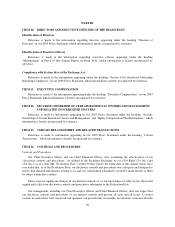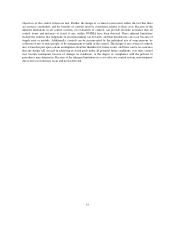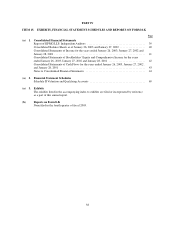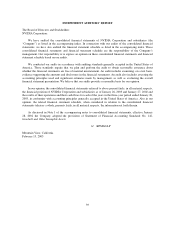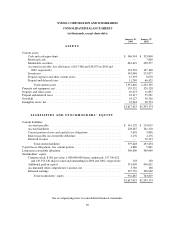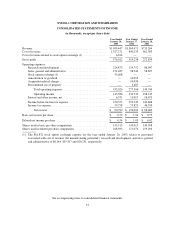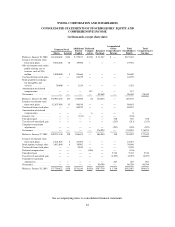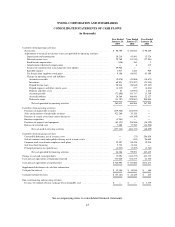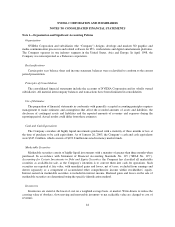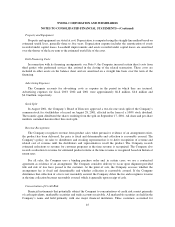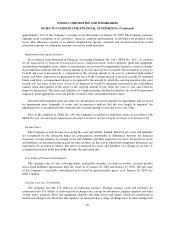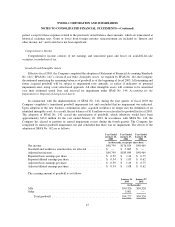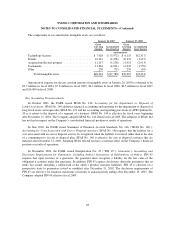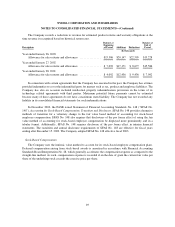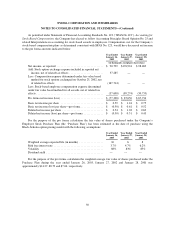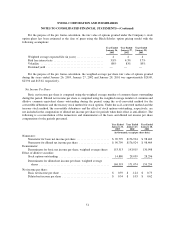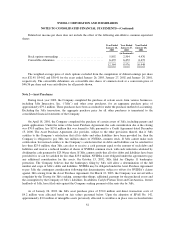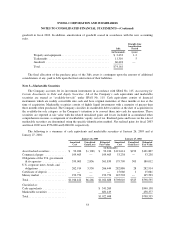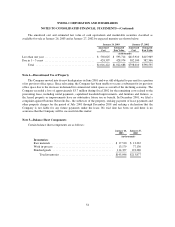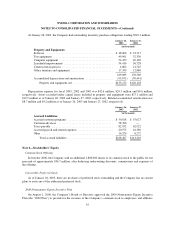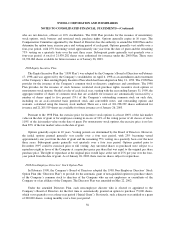NVIDIA 2003 Annual Report Download - page 48
Download and view the complete annual report
Please find page 48 of the 2003 NVIDIA annual report below. You can navigate through the pages in the report by either clicking on the pages listed below, or by using the keyword search tool below to find specific information within the annual report.NVIDIA CORPORATION AND SUBSIDIARIES
NOTES TO CONSOLIDATED FINANCIAL STATEMENTS—(Continued)
approximately 47% of the Company’s accounts receivable balance at January 26, 2003. The Company performs
ongoing credit evaluations of its customers’ financial condition and maintains an allowance for potential credit
losses. This allowance consists of an amount identified for specific customers and an amount based on overall
estimated exposure, excluding the amounts covered by credit insurance.
Impairment of Long-Lived Assets
In accordance with Statement of Financial Accounting Standards No. 144 (“SFAS No. 144”), Accounting
for the Impairment or Disposal of Long-Lived Assets, long-lived assets, such as property, plant and equipment,
and purchased intangible assets subject to amortization, are reviewed for impairment whenever events or changes
in circumstances indicate that the carrying amount of an asset may not be recoverable. Recoverability of assets to
be held and used is measured by a comparison of the carrying amount of an asset to estimated undiscounted
future cash flows expected to be generated by the asset. If the carrying amount of an asset exceeds its estimated
future cash flows, an impairment charge is recognized by the amount by which the carrying amount of the asset
exceeds the fair value of the asset. Assets to be disposed of would be separately presented in the consolidated
balance sheet and reported at the lower of the carrying amount or fair value less costs to sell, and would no
longer be depreciated. The assets and liabilities of a disposed group classified as held for sale would be presented
separately in the appropriate asset and liability sections of the consolidated balance sheet.
Goodwill and intangible assets not subject to amortization are tested annually for impairment, and are tested
for impairment more frequently if events and circumstances indicate that the asset might be impaired. An
impairment loss is recognized to the extent that the carrying amount exceeds the asset’s fair value.
Prior to the adoption of SFAS No. 144, the Company accounted for long-lived assets in accordance with
SFAS No. 121, Accounting for Impairment of Long-Lived Assets and for Long-Lived Assets to be Disposed Of.
Income Taxes
The Company records income taxes using the asset and liability method. Deferred tax assets and liabilities
are recognized for the estimated future tax consequences attributable to differences between the financial
statement carrying amounts of existing assets and liabilities and their respective tax bases. Deferred tax assets
and liabilities are measured using enacted tax rates in effect for the year in which those temporary differences are
expected to be recorded or settled. The effect on deferred tax assets and liabilities of a change in tax rates is
recognized in income in the period that includes the enactment date.
Fair Value of Financial Instruments
The carrying value of cash, cash equivalents, marketable securities, accounts receivable, accounts payable
and accrued liabilities approximate their fair values as of January 26, 2003 and January 27, 2002. The fair value
of the Company’s convertible subordinated notes based on quoted market prices as of January 26, 2003 was
$260.2 million.
Foreign Currency Translation
The Company uses the U.S. dollar as its functional currency. Foreign currency assets and liabilities are
remeasured into U.S. dollars at end-of-period exchange rates, except for inventories, prepaid expenses and other
current assets, property, plant and equipment, deposits and other assets and equity, which are remeasured at
historical exchange rates. Revenue and expenses are remeasured at average exchange rates in effect during each
46


